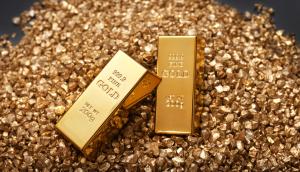'Comparing Precious Metals: What Drives the Value of Gold, Silver, Platinum, and Palladium'
Industrial applications, global supply chains, and investor behavior combine to determine what a metal is worth in today’s economy”
METAIRIE, LA, UNITED STATES, September 30, 2025 /EINPresswire.com/ -- Precious metals have served as a foundation of wealth and artistry for centuries. Each carries unique properties, uses, and economic value that influence markets and demand. While gold often receives the most attention, other metals such as palladium, platinum, and silver play equally significant roles. Their value is not solely tied to rarity but also to industrial demand, durability, and global economic factors.— Ken Bowers
Gold has traditionally symbolized security and luxury. Its resistance to corrosion and ease of shaping made it ideal for jewelry and currency throughout history. Central banks hold reserves of gold because it represents stability. Investors continue to turn to gold during times of economic uncertainty, reinforcing its reputation as a safe haven. The consistency of demand keeps gold prices high even when industrial applications are limited compared to other metals.
Silver, though less expensive, remains versatile. Its high electrical and thermal conductivity make it essential in electronics, medical devices, and solar panels. In addition to industrial use, silver maintains cultural importance in jewelry and decorative arts. Unlike gold, silver prices often fluctuate more dramatically because of its dual role as both an industrial metal and a store of value. Market shifts in technology, especially renewable energy, continue to influence silver demand.
Platinum has long been valued for strength and rarity. Its durability makes it highly desirable in fine jewelry, particularly in engagement rings and heirloom pieces. Beyond aesthetics, platinum serves as a critical component in catalytic converters for vehicles, reducing harmful emissions. This industrial use ties its price to shifts in the automotive sector and regulatory changes around emissions. Platinum’s limited geographic sources also make it more vulnerable to supply disruptions.
Palladium has experienced remarkable price surges in recent years. Though less well-known historically than gold or silver, palladium has become indispensable in modern industry. Like platinum, palladium plays a central role in catalytic converters, which has pushed demand sharply upward as global emissions standards tighten. Limited mining sources—concentrated primarily in Russia and South Africa—have further amplified palladium’s market volatility and value.
According to Ken Bowers, owner of KenWorks in Metairie, Louisiana, “The value of precious metals extends beyond rarity. Industrial applications, global supply chains, and investor behavior combine to determine what a metal is worth in today’s economy.”
The interplay between scarcity and utility explains why certain metals rise in value more quickly than others. Gold retains timeless appeal through tradition and financial security. Silver bridges artistry and technology, providing both decorative beauty and practical use. Platinum offers durability and prestige while meeting environmental demands. Palladium, once a relatively overlooked element, now commands some of the highest prices in the precious metals market because of its essential role in modern automotive design.
Geopolitical factors also shape value. Disruptions in mining, trade restrictions, and regional conflicts impact supply chains for all four metals. When availability decreases, prices respond quickly. For palladium and platinum, supply challenges remain particularly acute due to their limited mining locations. Gold and silver, mined in multiple countries, still face pressures from environmental regulations and production costs.
The future of these metals depends heavily on technology and policy. Growing interest in renewable energy may expand silver’s role in solar power systems. Hydrogen fuel cell technology, still developing, could boost demand for platinum. Stricter global emissions standards are likely to keep palladium in high demand. Meanwhile, gold continues to benefit from investor trust, with fluctuations reflecting broader economic uncertainty rather than industrial shifts.
Sustainability efforts also factor into long-term valuation. Recycling of catalytic converters provides a secondary source of palladium and platinum, but the process remains costly and limited. Increased emphasis on sustainable mining and ethical sourcing has the potential to reshape supply chains and consumer demand.
For centuries, precious metals have reflected both human creativity and economic realities. From the symbolic weight of gold to the modern industrial necessity of palladium, each metal tells a different story. Markets value not only beauty and rarity but also adaptability to current needs. As industries evolve and environmental considerations grow, the hierarchy of value among these metals may continue to shift.
Metals are more than commodities; they are markers of technological progress, cultural expression, and economic resilience. The balance between their traditional roles and modern applications explains why their prices diverge, and why palladium or platinum may surpass gold in value under certain conditions. What remains constant is the enduring significance of these elements in shaping both art and industry.
Morgan Thomas
Rhino Digital, LLC
+1 504-875-5036
email us here
Visit us on social media:
Facebook
Legal Disclaimer:
EIN Presswire provides this news content "as is" without warranty of any kind. We do not accept any responsibility or liability for the accuracy, content, images, videos, licenses, completeness, legality, or reliability of the information contained in this article. If you have any complaints or copyright issues related to this article, kindly contact the author above.


